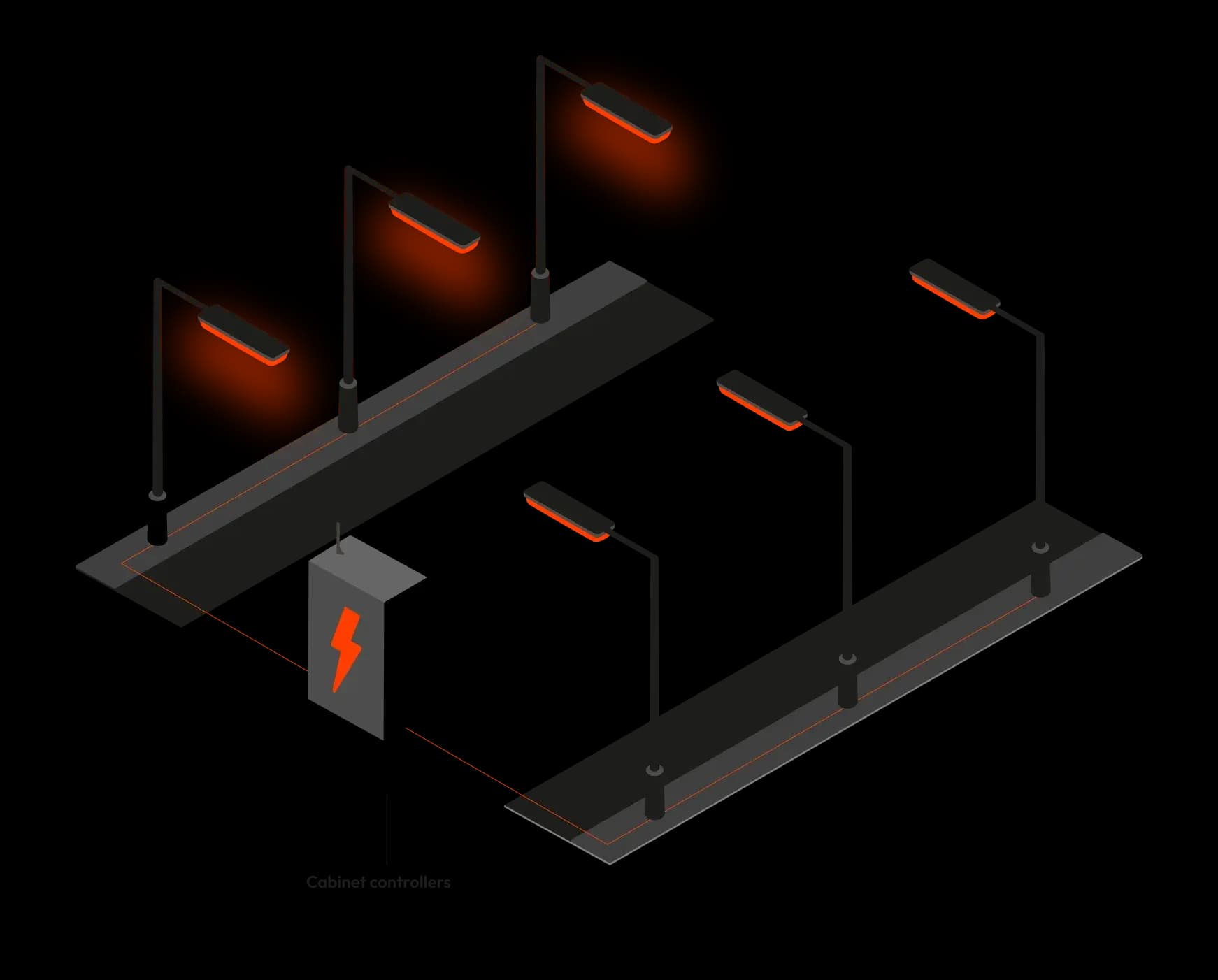Selecting the best group segment controller
Safeguarding both lights and the energy chain behind them

For more than a decade, individual controllers have been presented as the future of outdoor lighting. In practice, municipalities and utilities continue to rely on group segment controllers. The reason is simple: they control not only the luminaires, but the entire energy chain.
Beyond lighting lines
A group controller is installed in the cabinet and manages the full electrical segment: incoming power, contactors, protection devices, monitoring points, and sensors.
This allows operators to:
- Switch and protect feeder lines.
- Detect voltage presence across critical nodes.
- Integrate with meters and third-party equipment via RS-485 or CAN.
- Collect diagnostics and alarms for the whole feeder, not just a single luminaire.
Why cities still prefer segment control
- Reliability: one central device in the cabinet is easier to protect, maintain, and replace than hundreds of nodes on poles.
- Clear diagnostics: dispatchers see the state of an entire segment and can localize faults quickly.
- Cost efficiency: one controller per cabinet reduces CAPEX compared to mass deployment of individual units.
- Scalability: expansion modules (MultiConnect, HighVoltRelay, PowerTrack) extend monitoring and control without redesigning the network. Moreover, segment controllers can serve as a solid base for future upgrades to individual control — for example, PLC or Radio nodes can be layered on top without replacing the cabinet infrastructure.

Recommendations for selecting the right controller
Choosing the right segment controller depends on cabinet type and power configuration. DITRA Solutions provides solutions for:
- DITRA CORE PRO – the standard for three-phase cabinets without Ethernet or GPS.
- DITRA CORE PRO-2 – for cabinets with Ethernet connectivity or where GPS/GLONASS synchronization is required.
- DITRA CORE LIGHT – a simplified version of CORE PRO with reduced number of relay outputs and control points.
- DITRA CORE MINI – an ultra-compact option for managing one outgoing line.
The differences are minimal at the functional core, but they allow precise adaptation to project conditions — from large substations to small feeder cabinets.
Software ecosystem flexibility
Municipalities can decide how deep they want to engage with the software infrastructure. At the entry level, DITRA CMS provides daily dispatching, scheduling, and cabinet monitoring. For advanced needs, DITRA Synergy adds powerful analytics, reporting, and city-wide monitoring. And through open API, all collected data can be integrated into external platforms if required.
The central role in energy infrastructure
Segment controllers remain the backbone of modern electrical infrastructure. They provide not just lighting schedules, but visibility and control over the power chain that feeds entire districts. Even when cities adopt individual nodes for advanced features, the group controller stays as the anchor point of reliability, monitoring, and data flow.
That is why, in 2025, group segment control is not a legacy choice — it is still the most rational foundation for street and city lighting systems.




